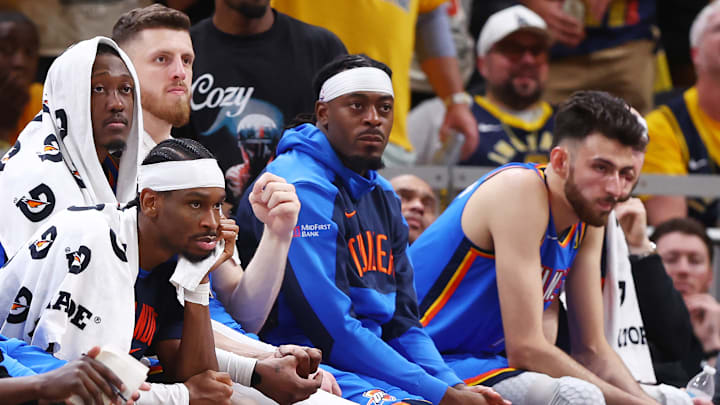The OKC Thunder are without question the deepest team in the NBA.
While most clubs are fortunate to have two to five reliable difference-makers residing within their arsenal, Oklahoma City finds itself rostering somewhere in the eight to ten range when it comes to such talents.
Coach Mark Daigneault's talent pool goes well beyond the star trio of Shai Gilgeous-Alexander, Jalen Williams, and Chet Holmgren.
From guys like Lu Dort and Isaiah Hartenstein to Cason Wallace and Aaron Wiggins, there are a plethora of contributors who can go on to provide game-changing contributions at any given moment.
Because of this, lineup experimentation and rotational variance are things that the Thunder could easily be tempted to toy around with during the upcoming 2025-26 campaign.
However, as we witnessed during last season's championship run, such a strategy may actually be more of a detriment than a luxury for OKC.
Thunder should look for rotational continuity, not experimentation
Due to their widespread injury woes, 2024-25 saw the Thunder being forced into rolling out a whopping 30 different starting lineups throughout the regular season.
Now, thanks to the previously mentioned deep bag of top-tier talents they have at their disposal, the team still managed to rack up 68 wins on the year, tied for the fourth-most in league history.
Of course, though unquestionably impressive, when at full strength, OKC still showed a desire to run with the unit of Gilgeous-Alexander, Dort, Williams, Holmgren, and Hartenstein as their starting five.
That is, however, until the NBA Finals came around.
Despite ranking in the 97 percentile in point differential, the 98 percentile in points per possession, and the 100 percentile in effective field goal percentage while boasting a record of 21-8 up to that point (regular season and playoffs up to that point), in a shocking turn of events, coach Daigneault opted to get cute with his starting lineup orientation.
In an effort to better match up with Indiana's run-and-gun play style, the Thunder decided to pull Hartenstein from the unit and insert Cason Wallace, thus committing to a quicker, guard-heavy approach.
This particular move ultimately saw Oklahoma City lose Game 1 of the championship round, which led to them fumbling their home-court advantage, and found them facing a 2-1 hole despite coming into the series as heavy favorites.
Fortunately, the headman finally came to his senses ahead of Game 4 and reverted to their traditional two-big lineup with Wallace coming off the pine. From there on out, the Thunder would go 3-1 and, in the end, win their first Larry O'Brien Trophy in seven games.
Though all ended up panning out in the team's favor, even with the title win, the decision by Daigneault to experiment with OKC's rotation is something that is still being ridiculed months later, with Charles Barkley recently articulating that it "almost cost your team the championship."
"You don't change up things when you got the best team. You've been the best team in the NBA all season," Barkley said.
If this trial-and-error taught the Thunder anything, it's that even though they may have the personnel necessary to allow them to shake up the starting lineup contingent on matchups, rotational consistency may very well be the biggest key to ultimate success.
While keeping opposing teams on their toes by regularly switching lineups may be a fun idea in concept, in practice, keeping stability in their rotational configuration should be viewed as a must following their nearly devastating playoff experiment.
